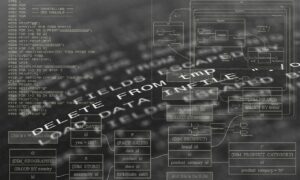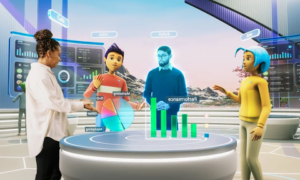Trying to build an AI system that can grow as your workload increases?
Or maybe you’re wondering how to run deep learning models without hitting performance issues?
If you’re working with artificial intelligence, scalability matters. And that’s exactly where GPUs and Kubernetes come in—they make it easier to create AI platforms that are powerful, flexible, and ready to handle more.
The Need for Scalable AI Infrastructure
AI workloads are not only growing, they’re becoming more complex. From natural language processing to image recognition, the amount of data being used and processed is increasing rapidly. Traditional setups often struggle to keep up, especially when models require parallel processing, fast training times, or distributed systems.
To keep things running efficiently, businesses and developers need an infrastructure that can scale quickly, manage workloads intelligently, and deliver high performance on demand. That’s where the combination of Kubernetes and GPUs in the cloud starts to shine.
Simplified Management with Kubernetes as a Service
Deploying AI applications often involves multiple components—data pipelines, training scripts, APIs, and more. Managing them all manually takes time and can lead to errors. This is why many developers use kubernetes as a service to simplify everything.
Kubernetes helps organize and run containerized applications automatically. It distributes the workload, monitors application health, and restarts services when needed. When used for AI, Kubernetes makes it easy to deploy models, run batch training jobs, and maintain uptime for production services.
How Cloud Tech Supports AI Growth
Artificial intelligence needs a flexible environment to truly thrive. From training large datasets to running live predictions, the cloud offers the ideal foundation for AI software development. One of the most important advantages of the cloud is how it supports rapid scaling without needing to purchase or maintain any physical hardware.
So if you’ve been asking yourself what is cloud computing, think of it as a smarter way to access computing tools over the internet. You get virtual machines, storage, databases, and more—whenever you need them. And it’s all on-demand, which means you only pay for what you use.
This kind of setup is especially helpful for AI teams. You can quickly test models, increase processing power during heavy workloads, and access AI tools built directly into the cloud platform. It removes the limits that come with traditional systems and opens up more possibilities for innovation.
The Power Behind AI: GPU Acceleration
While the cloud provides flexibility and scalability, GPUs provide the speed. AI workloads often rely on GPUs to handle high-volume parallel processing. Whether it’s training a deep neural network or performing real-time image analysis, GPUs do the job faster and more efficiently than standard CPUs.
Cloud providers now offer dedicated GPU Cloud services that let you tap into high-performance GPU machines without having to invest in the hardware yourself. These virtual machines come pre-equipped with powerful GPUs—like the NVIDIA A100 or L40S—that are designed to support AI-heavy tasks.
With GPU Cloud, you can scale resources as needed, switch between different types of GPUs, and manage everything from a single dashboard. Whether you’re a researcher running complex models or a startup building an AI product, these tools help you move faster and get better results.
Combining Kubernetes and GPUs for AI Success
Now let’s talk about how these tools work together. Kubernetes makes deployment and scaling easy. GPUs make processing fast. When combined in a cloud environment, they create an Ai Platforms that’s not just powerful, but also smart and adaptable.
Here’s how this combination works in practice:
- You build your AI application using containers.
- Kubernetes manages those containers, deploying them to machines with available GPU resources.
- The GPU Cloud provides the high-performance power to run those applications efficiently.
Key Benefits for Teams and Businesses
Enterprises and development teams using this kind of setup experience a range of benefits:
- Faster Training Times: Large datasets and complex models train more quickly with GPU acceleration.
- Better Resource Use: Kubernetes ensures workloads are distributed efficiently.
- Simple Updates: Deploy new model versions or updates without interrupting services.
- Team Collaboration: Cloud platforms let multiple team members access the same resources, test ideas, and deploy code together.
- Cost Control: Pay for GPU time only when needed, avoiding unnecessary spending on underused resources.
Use Cases Where This Setup Shines
This kind of cloud-based AI setup is ideal for many different projects, including:
- Computer vision and image analysis
- Natural language processing and text generation
- Predictive analytics and forecasting
- Recommendation systems for e-commerce
- Real-time decision-making tools in finance or healthcare
Easier Monitoring and Maintenance
Another reason developers prefer this kind of architecture is the built-in monitoring and automation. Kubernetes tracks the health of applications and automatically restarts or relocates services as needed. Cloud dashboards offer clear insights into resource usage, GPU performance, and application behaviour.
This reduces manual work, prevents issues before they grow, and helps teams make smarter decisions. With logs, alerts, and metrics all in one place, managing your AI platform becomes much more straightforward.
Looking Ahead with Confidence
AI is growing fast, and so are the demands that come with it. Developers need tools that can keep up without becoming complicated. That’s exactly what GPUs and Kubernetes provide in a cloud setup. You get speed, structure, and scalability, all without dealing with physical infrastructure or long setup times.





























